Sri Lanka: A Treasure Trove of Gemstones
Sri Lanka is globally celebrated for its rich and diverse range of gemstones. From vibrant sapphires to rare spinels, the island nation has earned a reputation as a leading source of high-quality gems in the global market. Here's a closer look at some of the most notable gemstones found in Sri Lanka:
Rubies: Sri Lankan rubies, especially those displaying the coveted "pigeon's blood" red hue, are highly prized for their intense color and rarity.
Sapphires: Perhaps the most famous of Sri Lanka’s gems, sapphires come in an array of stunning colors—most notably deep blue, but also pink, yellow, and even white. The country is renowned for producing some of the finest quality sapphires in the world.
Tourmalines: Known for their impressive color range, Sri Lankan tourmalines often feature fascinating bi-color and multi-color variations, making them a favorite among collectors and jewelers.
Spinel: Once mistaken for ruby, spinel is now recognized for its brilliance and beauty. Sri Lanka is particularly known for producing vibrant blue spinels, a rare and valuable variety.
Other Gemstones: In addition to the above, Sri Lanka is also a source of many other precious and semi-precious stones, including garnet, zircon, aquamarine, alexandrite, chrysoberyl, emerald, moonstone, amethyst, cat’s eye, and rose quartz.
With such an impressive gemstone portfolio, it’s no wonder Sri Lanka holds a prestigious place in the world of gemology and jewelry.

Sri Lanka Ayurveda – The Ancient Science of Life
Ayurveda, an ancient system of medicine with a history spanning over 5,000 years, has evolved into a holistic healing tradition in Sri Lanka—known today as Sri Lanka Ayurveda. The name itself speaks volumes: “Ayur” means life, and “Veda” means science. Rooted in the wisdom of ancient Indian and Sri Lankan sages, this life science has been passed down through generations, refined through observation, experience, and deep spiritual insight.
Sri Lanka’s unique approach to Ayurveda blends traditional practices with modern wellness, offering a complete system of non-invasive healing focused on prevention, rejuvenation, and long-term well-being. Many luxury hotels and beach resorts across the island now offer authentic Ayurvedic treatments, allowing visitors to experience this ancient wisdom in a serene, natural setting.
Unlike conventional medicine, Ayurveda doesn’t just treat symptoms—it seeks to restore balance in body, mind, and spirit. Its preventive and curative therapies are designed to enhance physical health, mental clarity, emotional peace, and even spiritual harmony.
Travelers to Sri Lanka will not only discover breathtaking landscapes and rich culture but also the gift of wellness. With Sri Lanka Ayurveda, you’ll return home not just with memories, but with renewed vitality and a deeper connection to yourself and nature.
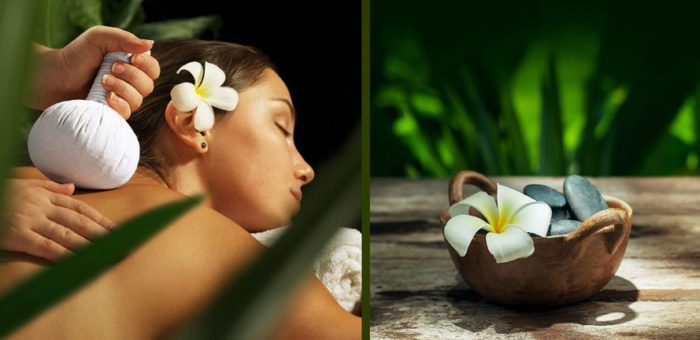
Discover the Power of Yoga and Meditation on Your Sri Lanka Journey
Yoga is more than just physical exercise—it's a path to total well-being. Practicing yoga enhances flexibility, strengthens joints, improves spinal health, and increases muscle elasticity, all of which boost blood circulation. It brings harmony to your body and mind, helping you focus, breathe deeply, and master the art of relaxation. Over time, yoga fosters discipline, encourages mindful eating, strengthens the immune system, and promotes resilience against illness. The result? A positive mindset and a renewed sense of balance.
Whether you're exploring Sri Lanka on a tour package or unwinding in a luxury boutique hotel, take your vacation a step further—embrace the practice of yoga. It could be the most meaningful souvenir you take home.
Meditation: A Journey Within
Meditation isn’t a religious ritual—it’s a scientifically supported practice for mental clarity and emotional stability. By learning to control your thoughts and focus your attention, meditation helps regulate metabolism, heartbeat, and blood pressure. It influences brain chemistry, promoting calmness and emotional resilience.
Today, professionals around the world turn to meditation to manage stress and find inner peace amidst their demanding lives. During your stay, you’ll find that many meditation centers—conveniently located near beach resorts and private bungalows—offer lessons in this transformative practice.
Yoga and meditation in Sri Lanka aren’t just vacation activities—they’re gateways to a healthier, more centered life.
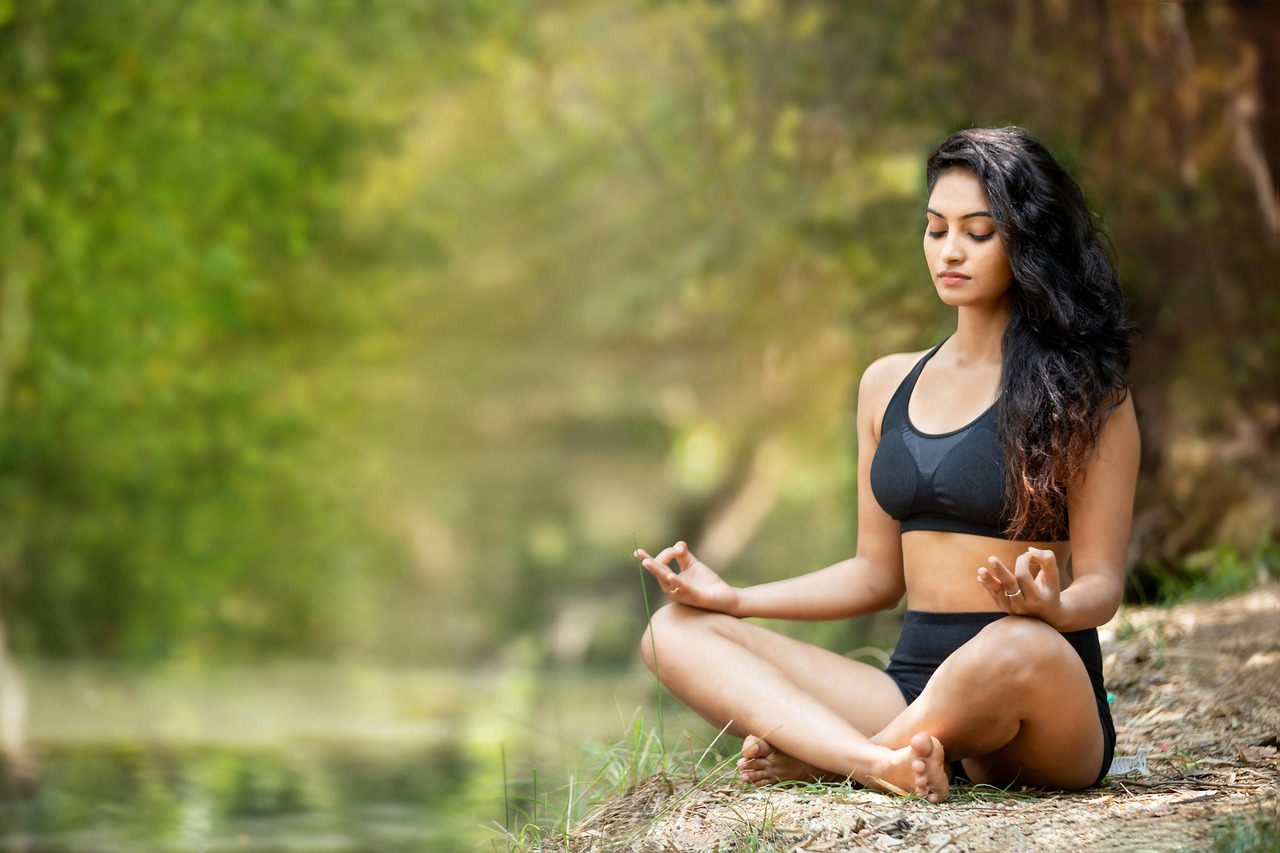
Sri Lanka is a surfing paradise, offering waves suitable for all skill levels, from beginners to experienced surfers. The surf seasons vary depending on the coast (East vs. West/South).
Explore the underwater world! Sri Lanka has diverse marine life, colorful coral reefs, shipwrecks, and opportunities for both diving and snorkeling.
High-speed thrills on the water! These activities are available in areas with calm, open water.
Harness the power of the wind! These sports require open water and consistent wind conditions.
Explore calm lagoons, rivers, and coastal areas at your own pace. A great way to enjoy the scenery and wildlife.
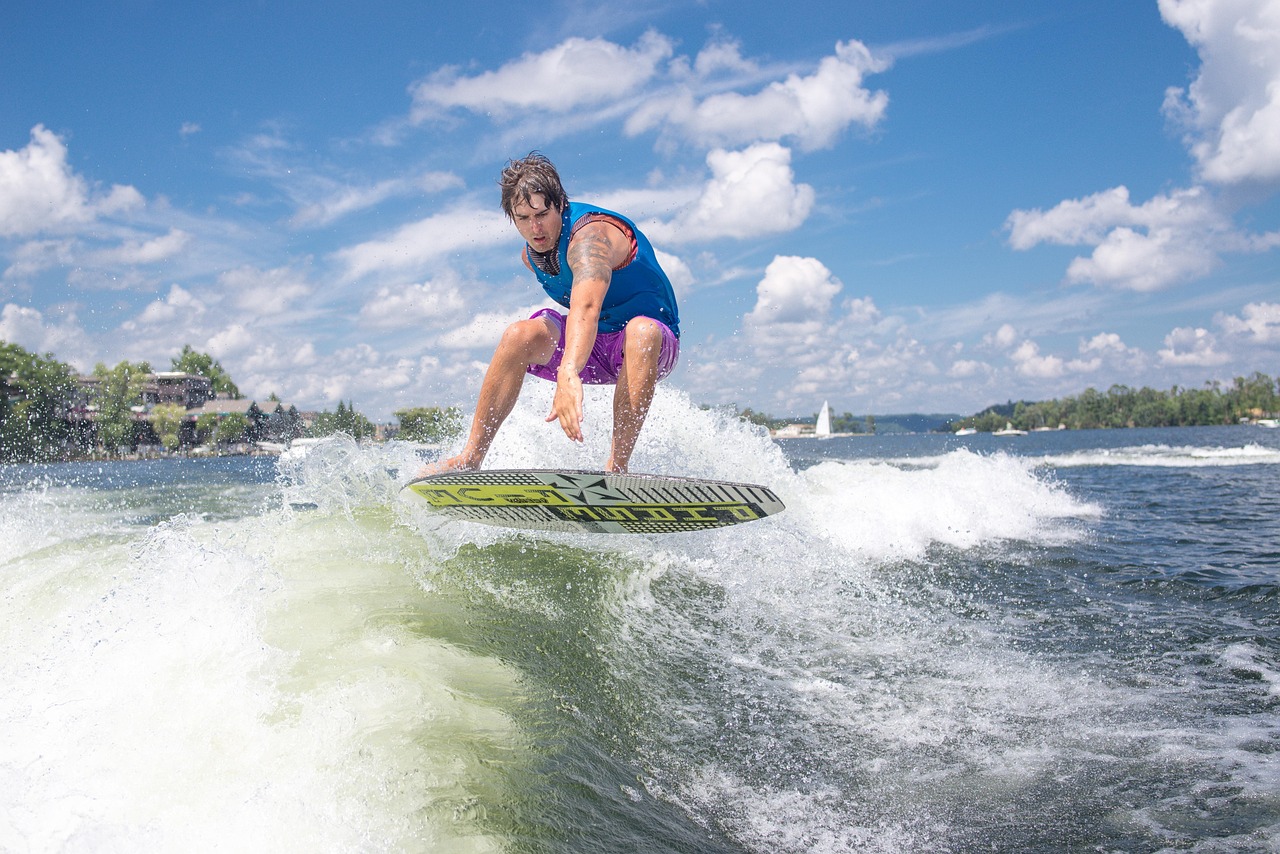
Hot air ballooning is one of the most breathtaking ways to experience the beauty, history, and diversity of Sri Lanka. Floating gently above the landscape, you’ll witness a stunning blend of ancient heritage, modern life, spiritual landmarks, and natural tranquility from a bird’s-eye view.
The best season for ballooning runs from October to April when calm winds and clear skies create ideal flying conditions. During your flight, you'll glide over temples, shrines, rivers, cascading dams, winding highways, lush green paddy fields, and bustling towns, all laid out like a living map below.
One of the highlights is soaring above the majestic Sigiriya Rock Fortress, a UNESCO World Heritage Site and one of Sri Lanka's most iconic attractions. The view from above offers a unique perspective on this ancient royal citadel and its surrounding landscape.
Safety is a top priority. Balloons are crafted by leading international manufacturers and operated by licensed pilots certified by the Civil Aviation Authority of Sri Lanka.
Whether you're an adventure seeker or simply looking for a peaceful, unforgettable experience, hot air ballooning over Sri Lanka promises memories that will last a lifetime.
.
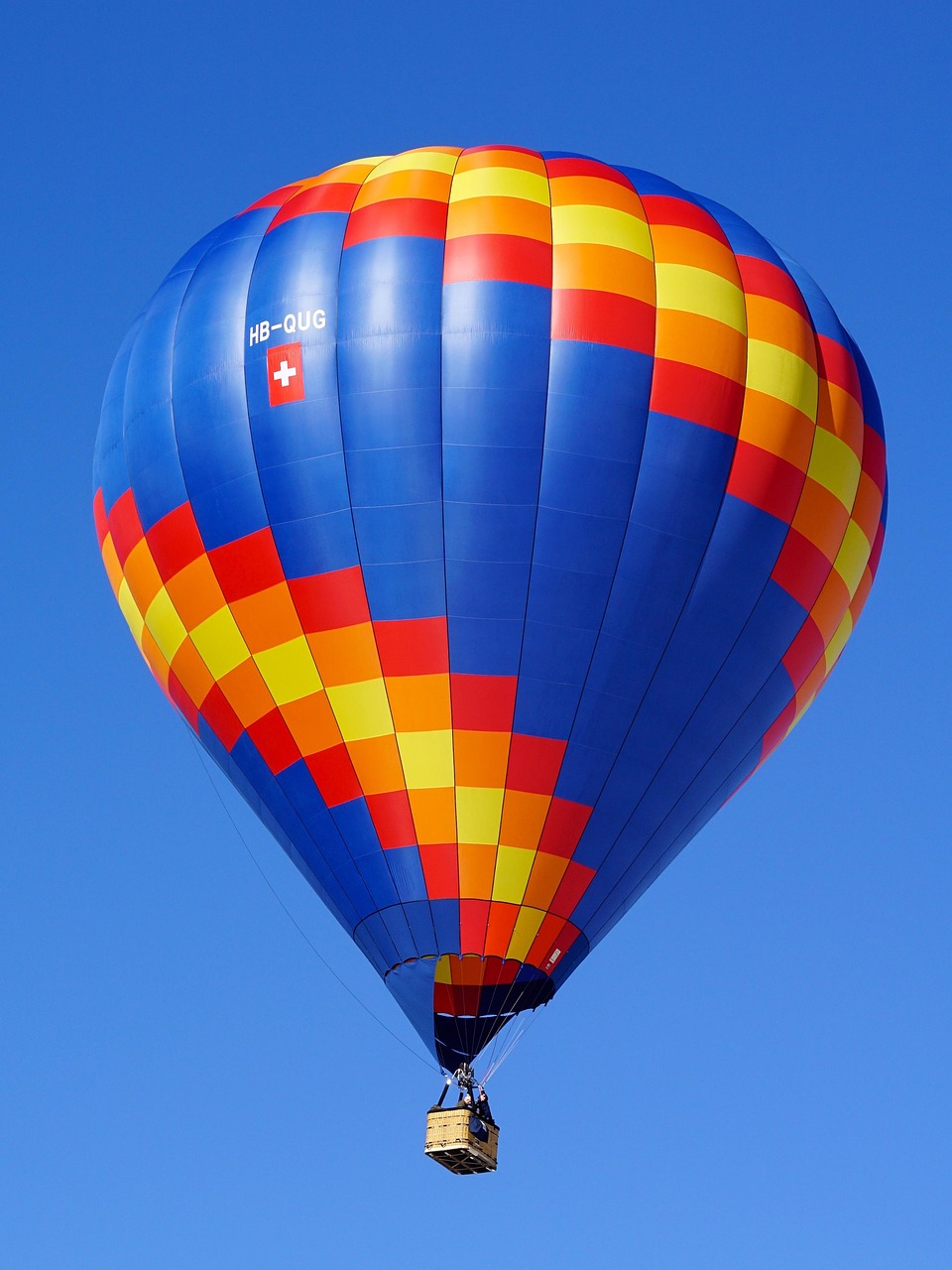
Waterfalls of Sri Lanka: Nature’s Cascading Treasures
Despite its compact size, Sri Lanka boasts an extraordinary number of waterfalls, most of which are nestled within the Central Highlands. Many of these natural wonders can be enjoyed without straying far from the main routes of your Sri Lanka tour. While some lie hidden in dense forests, they are clearly marked on any Sri Lanka map or travel guide for those eager to explore.
The streams that originate in the hill country often transform into majestic rivers as they descend towards the plains, cascading down rocky cliffs in their rush to meet the distant ocean. These enchanting falls not only shape the landscape but also add a magical charm to Sri Lanka’s natural appeal. Here are nine must-see waterfalls that highlight the island’s aquatic beauty:
1. Bambarakanda Ella
The tallest waterfall in Sri Lanka, Bambarakanda Ella towers at 263 meters (865 feet). It is most impressive during the rainy season from October to March. Located 22 km from Balangoda, it’s accessible via the Haputale–Kalupahana Road.
2. Diyaluma Falls
At 559 feet, Diyaluma is Sri Lanka’s second-highest waterfall. Aside from its breathtaking beauty, it carries a captivating local legend—don’t forget to ask your guide for the story on your visit.
3. Dunhinda Falls
Located near Badulla, Dunhinda is a spectacular 210-foot waterfall fed by the Badulu Oya, a tributary of the Mahaweli River. A 2 km trek through lush forest leads to its misty base.
4. Galagediyana Ella
A short distance from Colombo, Galagediyana Ella stands 35 feet high and is known for its wide flow and unique rocky setting—true to its Sinhala name which means “heap of rocks.”
5. Ravana Ella
Steeped in legend, Ravana Ella is one of Sri Lanka’s widest waterfalls. According to the Ramayana, King Ravana hid Princess Sita in a cave behind this fall. Located near Ella and Haputale, it’s a scenic spot surrounded by mist and myth.
6. Bopath Ella
Easily accessible from Colombo, Bopath Ella is about 100 feet high and a popular picnic destination. Its unique leaf-shaped cascade (resembling the sacred Bo leaf) adds to its charm.
7. St. Clair’s Falls
Nicknamed the “Little Niagara of Sri Lanka,” St. Clair’s is the widest waterfall on the island. It has two distinct cascades—Maha Ella (80 meters high) and Kuda Ella (60 meters)—both flowing into the Kothmale River.
8. Devon Falls
Set within the Devon Tea Estate, this grand waterfall plunges 318 feet and features multiple cascades. Named after a pioneering English coffee planter, the fall is a striking sight against the backdrop of tea-covered hills.
9. Alupolla Ella
Located 25 km from Ratnapura, the Gem City, Alupolla Ella is a 200-foot waterfall composed of three separate cascades. It’s lesser-known but worth the detour for those exploring Sri Lanka’s hidden gems.
From misty legends to towering heights, Sri Lanka’s waterfalls offer a serene and dramatic escape into nature. Whether you're a casual traveler or an avid explorer, visiting these falls is sure to add unforgettable moments to your Sri Lanka vacation.

Whale Watching in Sri Lanka: A Marine Adventure Like No Other
Dreaming of an oceanic encounter with the largest creatures on Earth? Or perhaps a dance with playful Spinner Dolphins? Then look no further—Sri Lanka has been named the “Best Place in the World to See and Photograph Blue Whales”, and it’s also a prime destination to witness Sperm Whales and Spinner Dolphins in their natural habitat.
Back in 2007, marine biologist Dr. Charles Anderson confirmed what had once been just a theory: migratory whales pass through the southern seas of Sri Lanka, particularly near Dondra Head—the island’s southernmost point where the continental shelf narrows dramatically. From this landmark location, Blue Whales and Sperm Whales were first sighted from land, instantly transforming Sri Lanka into a world-renowned hotspot for whale watching.
From December to April, the southern coast of Sri Lanka offers calm seas and clear skies, creating ideal conditions for marine mammal sightings. This season welcomes:
The Blue Whale – the largest animal ever to have lived on Earth
The Sperm Whale – the largest toothed whale and deepest diving mammal
Spinner Dolphins – famously sociable, often seen in pods of 1,000 or more
Mirissa (Deep South)
Just a few miles offshore, you’ll find Blue Whales, Sperm Whales, and large dolphin pods during the migratory season. Mirissa has grown into one of the top whale-watching locations in the world.
Kalpitiya (West Coast)
Known for its dolphin-watching safaris, Kalpitiya is also a rising favorite for spotting whales, especially during the April to October season on the east and west coasts.
Jetwing Travels offers a 6-day holiday package for ocean lovers, combining comfort, adventure, and environmental responsibility:
Pick-up from the airport and transfer to Galle, a charming coastal city with colonial heritage
Accommodation at the Jetwing Lighthouse, a Small Luxury Hotel of the World
Whale watching expedition from Mirissa, guided by Jetwing Lighthouse’s resident naturalist, Anoma Alagiyawadu
Trained by Dr. Anderson himself, Anoma provides insightful commentary and ensures each trip is a responsible marine encounter.
TripAdvisor reviews describe this experience as "truly magical," with travelers frequently praising the eco-friendly approach and expert guidance.
Jetwing Travels is committed to sustainable and ethical tourism:
Boats maintain a safe distance from marine life
Whales are never pursued or harassed
Tours are conducted in a way that respects both the ocean and its inhabitants
While curious whales may approach boats, Jetwing’s policy is to let these majestic creatures make the first move—ensuring their natural behavior is preserved.
Join us on a responsible marine safari where nature meets luxury. Whether you're fulfilling a lifelong dream or simply seeking a once-in-a-lifetime thrill, whale and dolphin watching in Sri Lanka offers the perfect blend of adventure, discovery, and care for the natural world.
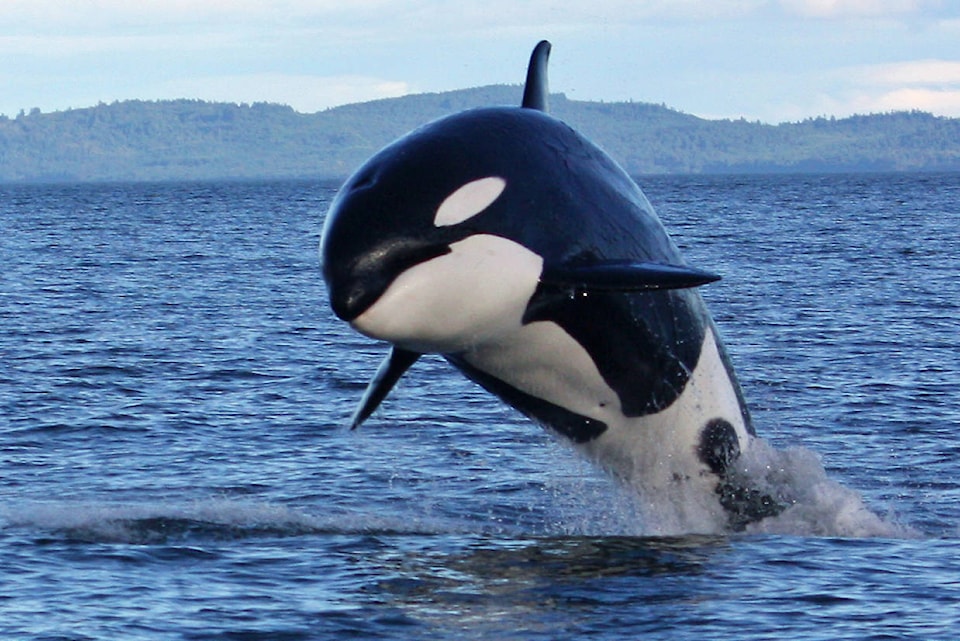
Bundala National Park
Bundala National Park was the first wetland in Sri Lanka to be recognized as a Ramsar site under the Ramsar Convention on Wetlands. Located about 250 km south of Colombo in the Hambantota district, this unique thorny scrub jungle, combined with beaches, sand dunes, and lagoons, is renowned for its rich biodiversity. The park is home to 197 species of birds and 32 mammal species, making it a popular destination for birdwatchers and wildlife enthusiasts alike. Bundala offers a special birdwatching experience, particularly because of the large flocks of Greater Flamingos that migrate here from Siberia and India’s Rann of Kutch. These flamingos arrive between August and April, with numbers reaching up to 2,000 during peak migration. Other wildlife includes small herds of elephants, wild boar, sambar deer, spotted deer, and grey langur monkeys, all of which can be seen within the park’s warm climate.
Horton Plains National Park
Situated over 2,000 meters above sea level, Horton Plains is Sri Lanka’s highest plateau and often described as one of the country’s most breathtaking yet challenging landscapes. Located 20 km south of Nuwara Eliya in the central highlands, accessing the plains requires a trek, but the stunning scenery of untamed grasslands, dense forests, lakes, and waterfalls is well worth the effort. The park supports diverse wildlife, including wild boar, sambar deer, the rare bear-monkey, and the endemic toque macaque. Key attractions include Baker’s Falls, Chimney Pool, and the famous World’s End—a dramatic 880-meter cliff offering what many consider the finest view in Sri Lanka.
Gal Oya National Park
Following Sri Lanka’s independence, the Gal Oya Valley irrigation project led to the creation of the country’s largest reservoir, Senanayake Samudra, which lies within Gal Oya National Park. This park stands out as the only one in Sri Lanka offering boat safaris, with the exciting sight of elephants swimming across the lake being a highlight. Visitors can also admire the scenic hill forests and spot wildlife such as leopards, water buffaloes, wild boar, crocodiles, and various deer species. Numerous small islands scattered in the reservoir provide habitat to about 150 bird species, out of the 430 recorded across Sri Lanka.
Kaudulla National Park
Opened in 2002, Kaudulla National Park is one of Sri Lanka’s newest wildlife reserves and a growing eco-tourism destination. Conveniently located near the Cultural Triangle, about 6 km from Gal Oya Junction on the Habarana-Trincomalee road, the park derives its name from the nearby ancient Kaudalla Tank, built by King Mahasena. Jeep safaris are the preferred way to explore Kaudulla, especially between August and December, when roughly 250 elephants inhabit the park. The park forms a vital 6,656-hectare elephant corridor connecting Minneriya National Park and Somawathie Chaitya. Its dry evergreen forests shelter 24 mammal species, 25 reptile species, and around 160 bird species. Visitors often spot leopards, fishing cats, sloth bears, and the endangered rusty-spotted cat here.
Kumana National Park
Located in Sri Lanka’s southeast, adjacent to Yala National Park, Kumana National Park is the country’s premier bird sanctuary. It is a favorite camping and safari destination, attracting avid birdwatchers with its diverse birdlife, including rare migratory species like the Black-necked Stork, Yellow-footed Green Pigeon, and Greater Racket-tailed Drongo. More common sightings include the Eurasian Spoonbill, Purple Heron, and Wood Sandpiper. The park hosts around 255 bird species along with mammals such as the European otter, golden jackal, and some elephants. Ancient cave inscriptions dating back to the 1st and 2nd centuries have also been found nearby. Each year, the famous Pada Yatra pilgrimage, involving Hindu and Buddhist devotees, passes through Kumana en route to Kataragama.
Minneriya National Park
Nestled between Habarana and Polonnaruwa, Minneriya National Park is known for its scrub forests and its status as a sanctuary for sambar deer, toque macaques, and leopards. However, the park’s biggest attraction is the world’s largest gathering of wild elephants. Each dry season from July to October, nearly 300 elephants converge at the nearly 2,000-year-old Minneriya tank to drink and socialize—a phenomenon famously called “The Gathering.” Due to water scarcity elsewhere, these majestic animals congregate here, drawing wildlife enthusiasts from around the globe. Lonely Planet ranks this spectacular event as the sixth-best wildlife spectacle in the world.
Wilpattu National Park
Wilpattu, Sri Lanka’s oldest and largest national park, lies on the island’s west coast and features dense secondary forests interspersed with open clearings. Unlike the drier Yala Park, Wilpattu is more lush, boasting a variety of vegetation and numerous natural basin-like tanks called villus that provide water to wildlife and birds. Crocodiles are commonly found in these villus, and the park is famous for its leopard and sloth bear populations. Sightings of leopards relaxing or drinking water from the villus are common, making it a thrilling experience. The best time to visit Wilpattu is between January and May.
Yala National Park
Located about 300 km southeast of Colombo, Yala National Park is Sri Lanka’s most visited wildlife destination and is often hailed by the BBC as one of Asia’s best wildlife parks. The park consists of five blocks, but only two are open to the public. Block 1 is popular due to its high leopard population. Historically, it was reserved for hunting until 1938 when it was converted to a conservation reserve. Besides leopards, visitors frequently spot elephants grazing or crossing roads, and the park is also known for the stunning mating dance of peacocks. Yala offers a quintessential wildlife safari experience.
Udawalawe National Park
Established in 1972 following the construction of the Udawalawe Reservoir, Udawalawe National Park is located south of Sri Lanka’s central hills. It is the island’s third most popular park and a vital habitat for aquatic birds and a large elephant population, with around 600 elephants residing there. The park also hosts crocodiles, foxes, various snakes, spotted and sambar deer, hundreds of buffaloes, and occasional leopards. The Elephant Transit Home, founded in 1995, provides care for orphaned baby elephants. There are camping sites and bungalows along the reservoir and Walawe River for visitors seeking an immersive wildlife experience.
Wasgamuwa National Park
The name Wasgamuwa originates from “Walas Gamuwa,” with “walasa” (or “walaha”) meaning sloth bear and “gamuwa” meaning wood in Sinhalese. The park was named for its once-abundant population of Sri Lankan sloth bears, which are now rare but still present. Enclosed mostly by the Mahaweli and Amban rivers, Wasgamuwa is a fantastic spot for birdwatching, home to species like the endemic Red-faced Malkoha and Yellow-fronted Barbet. With over 150 species of flora, the park is rich in biodiversity. It also holds historical importance due to the ruins of ancient irrigation tanks and canals built by King Parakramabahu I.
Kitulgala – Kelani Valley Forest Reserve
Kitulgala, part of the Kelani Valley Forest Reserve, is famously known as the filming location for the 1957 Academy Award-winning movie The Bridge on the River Kwai. It is one of the wettest places in Sri Lanka, influenced by two monsoons, and was established to protect the Kelani River drainage basin. The forest reserve shelters elusive endemic birds such as the Ceylon Grey Hornbill, Spot-winged Thrush, and Ceylon Scimitar Babbler. The river supports endemic fish and amphibians, while mammals include the Grizzled Indian Squirrel. Nowadays, Kitulgala is also a popular white-water rafting destination, offering adventure alongside jungle treks, camping, and great food.
Sinharaja Rainforest
Sinharaja Rainforest is a UNESCO World Heritage Site and a designated Biosphere Reserve located in Sri Lanka’s southwest lowland wet zone. First declared a forest reserve in 1875, the forest has long held cultural and historical significance. Its name translates to “Lion King,” reflecting its majestic biodiversity. It is the island’s last remaining tropical rainforest, with 60% of its trees being endemic. The rainforest is home to over half of Sri Lanka’s endemic mammals, butterflies, reptiles, rare amphibians, and insects. Visitors often marvel at unique species such as the Spineless Forest Lizard, Sri Lankan Rose, and Bamboo Orchid found here.
Pigeon Island National Park
A popular spot on Sri Lanka’s East Coast, Pigeon Island National Park is one of only two marine national parks in the country. Located just 1 km off the coast of Nilaveli, the park is named after the endangered Blue Rock Pigeon native to the island. Declared a sanctuary in 1963 and upgraded to a national park in 2003, it consists of two islands: Large Pigeon Island and Small Pigeon Island. The park is famous for its vibrant coral reefs, which stretch nearly 200 feet long and 100 meters wide, hosting over 300 species of coral reef fish. Visitors can also encounter juvenile and adult Black-tip reef sharks and sea turtles, making it an exciting underwater adventure.
Mullaitivu National Park
Once a battleground during Sri Lanka’s civil war, Mullaitivu is now being transformed into a wildlife sanctuary, particularly for elephants. The northern part of Mullaitivu district spans over 100,000 acres designated as a sanctuary to reduce human-elephant conflict caused by deforestation. As elephants increasingly searched for food near villages, fatal encounters occurred, prompting conservation efforts. Historically, around 15,000 wild elephants roamed Sri Lanka, but today only 3,000 to 4,000 remain, raising concern among conservationists. The establishment of Mullaitivu National Park aims to preserve the remaining natural habitats and protect the island’s dwindling elephant population.
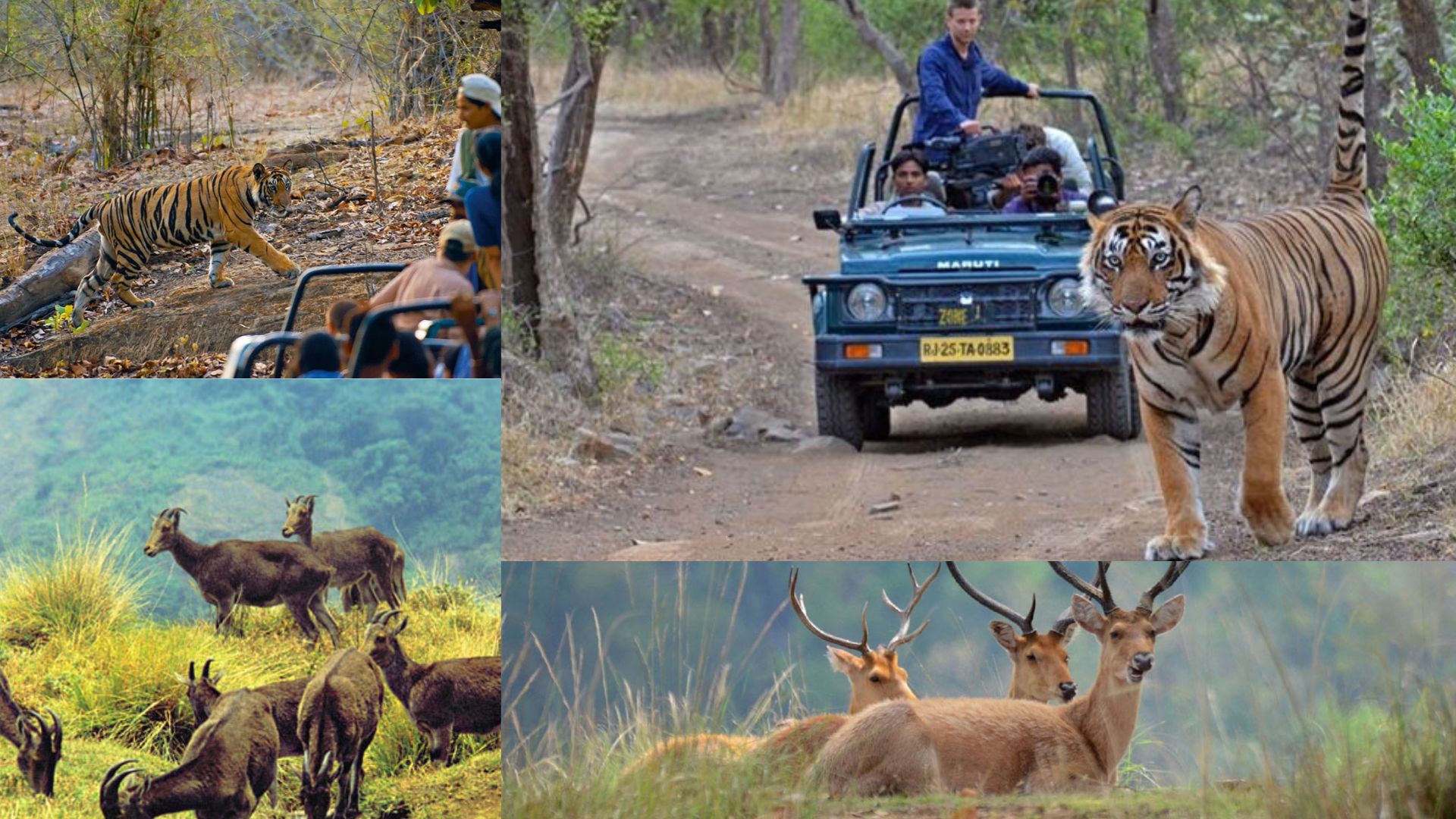
Elephant holidays are becoming incredibly popular—after all, who doesn’t love these gentle giants? Elephants are sociable, intelligent creatures with strong family bonds. Their impressive size makes spotting them in the wild a truly unforgettable experience. Sri Lanka is home to about 10% of all Asian elephants, which is remarkable considering the island’s size—approximately 5,000 wild elephants roam here.
But Sri Lanka’s fame with elephants doesn’t end there. Minneriya National Park hosts an extraordinary event each year from July to October during the dry season in the North Central and Eastern provinces: the spectacular gathering of hundreds of elephants. Due to drought conditions, water sources in the region dry up, drawing nearly 300 elephants to the Minneriya Tank—a crucial waterhole for their survival. A fully grown elephant drinks roughly 100 liters of water daily, making this tank vital during the long dry months.
The Minneriya Tank itself is an ancient marvel, constructed in the 3rd century AD by King Mahasena. It has since become a lifeline for elephants, as natural waterholes evaporate during droughts, leaving cracked mud patches. Filled during the monsoon season, the tank holds enough water for herds of thirsty elephants to drink and graze on the lush grass growing on its bed.
What makes the Minneriya Elephant Gathering so extraordinary is that it isn’t a migration but a convergence of multiple wild elephant herds from various parts of the North Central Province. This unique phenomenon has earned the event the nickname “The Gathering.” Lonely Planet ranks it sixth among the world’s best wildlife spectacles. It’s the largest such gathering in South Asia and attracts visitors from around the globe eager to witness herds of elephants drinking, feeding, and playing on the dry tank bed. Lucky visitors might even spot a majestic tusker or two.
An elephant safari in Minneriya also offers sightings of other wildlife, including deer, monkeys, and occasionally leopards. The tank bed is a hotspot for birds like painted storks, egrets, and the white-bellied and dark-bellied fish eagles, all hunting for fish in the shallow waters. The best time to experience this awe-inspiring event is between August and September—so don’t hesitate to book your elephant adventure with Jetwing Travels and immerse yourself in this unforgettable wildlife spectacle.
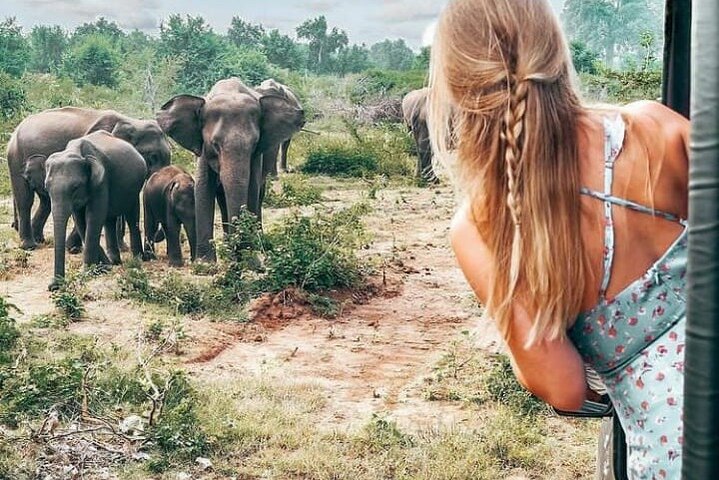
Hop on your bike and embrace the good old-fashioned pedal power as you cycle through charming traditional villages, vibrant towns, and lush green landscapes, uncovering the rich and diverse beauty of Sri Lanka along the way.

Sri Lanka is a true paradise for bird watchers, boasting over 400 bird species, including 33 endemics found nowhere else on Earth. From the dense rainforests of Sinharaja to the shimmering wetlands of Bundala and the mist-covered hills of Horton Plains, the island offers a variety of habitats bursting with vibrant avian life. Keep an eye out for the striking Sri Lanka Blue Magpie, the secretive Serendib Scops Owl, and flocks of migratory birds that grace the island during the winter months. Whether you’re a passionate ornithologist or simply a nature enthusiast, Sri Lanka’s incredible birdlife guarantees an unforgettable adventure.

Experience the thrill of white-water rafting in Sri Lanka’s adventure hub, Kitulgala. Nestled amidst lush rainforests and breathtaking waterfalls, the Kelani River presents rapids that range from gentle flows to exhilarating, adrenaline-pumping challenges. Perfect for both beginners and seasoned rafters, this exciting journey navigates Grade II to IV rapids, blending heart-racing adventure with stunning natural scenery. Whether you’re chasing an adrenaline rush or looking for a fun outdoor escape, white-water rafting in Sri Lanka is an unforgettable experience not to be missed!

+94702768807
Seelananda Road, Kaluwamodara, Aluthgama, Sri Lanka
Design By : viowebdesign.lk
Copyright © 2025 kanitours.com All Rights Reserved